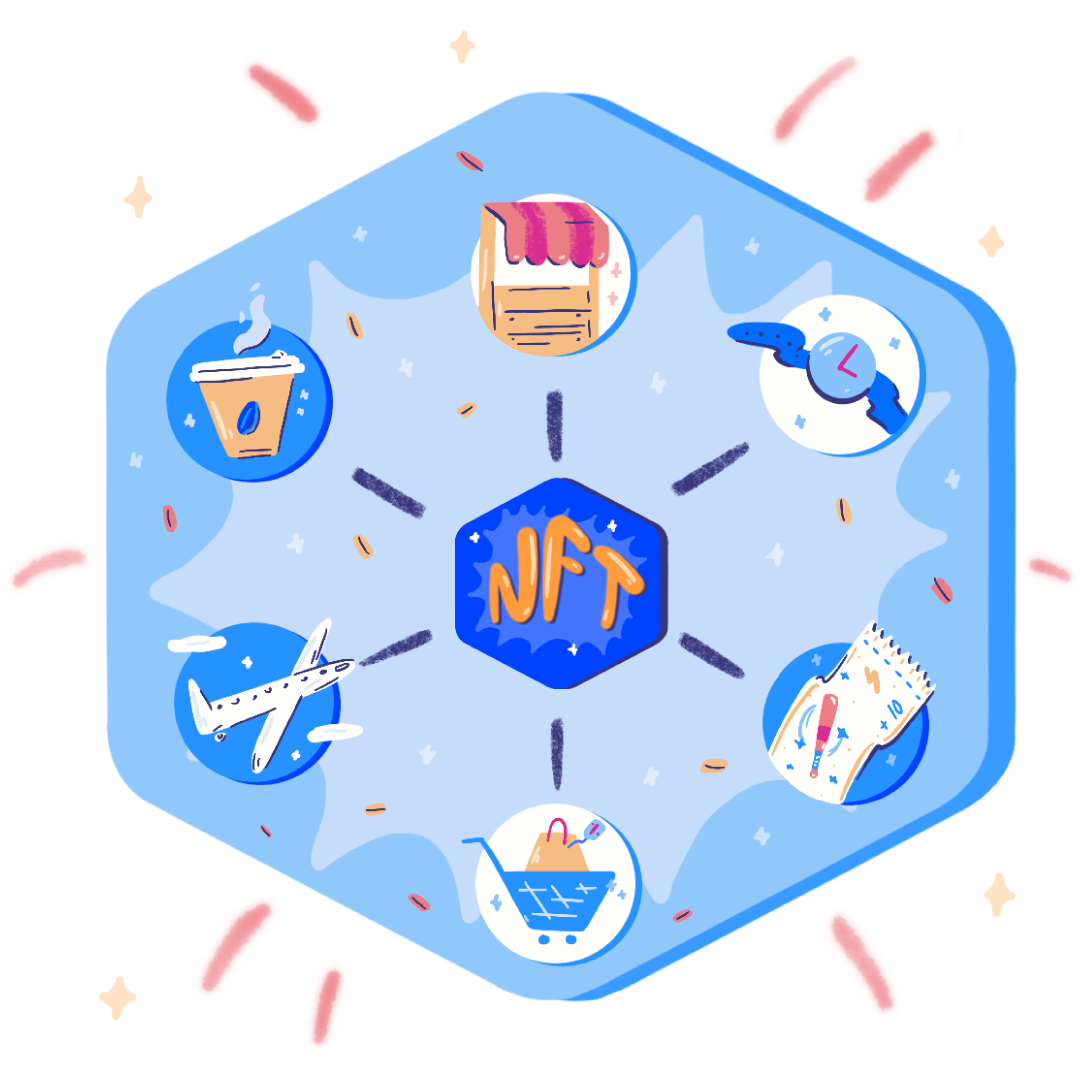Debunking Misconceptions of NFTs in Loyalty Programs: A Guide for Loyalty Experts
As the world adopts web3, non-fungible tokens (NFTs) are evolving beyond digital art, promising to revolutionize loyalty programs and reshape customer loyalty for businesses.
However, with the rapid rise of NFTs, there have been numerous misconceptions about their true potential, particularly when it comes to the technical, value & adoption aspect of them.
This blog post is designed to shed light on these misconceptions for loyalty experts and program managers seeking insights about the implementation of web3 technology in loyalty programs.
Top Misconceptions

Technical Misconceptions

1.1) Only mass-produced NFTs are effective
NFTs were never meant to be mass rewards. Keep your NFTs as exclusive and high-end as possible to maintain their uniqueness and mystique – Antavo (2023)
In addition to activity-based NFT stamps, members of Starbuck’s program can also directly purchase limited-edition NFTs. Enabling a new type of Web3 engagement and offering something special to your most valuable, and engaged customers.
1.2) NFTs pose security risks and raise sustainability concerns
As with any technology, there are potential security risks associated with NFTs.
By employing best practices and regular audits, businesses can ensure the safe implementation of NFT-based loyalty programs.
Additionally critics claim, that NFTs using energy-intensive proof-of-work (PoW) consensus mechanisms like Ethereum lead to high energy consumption and carbon emissions.
However, many NFT platforms are adopting eco-friendly solutions like proof-of-stake (PoS) & energy-efficient blockchains, mitigating environmental concerns and promoting NFT sustainability.
2.1) NFTs have no intrinsic value
NFTs hold value beyond digital ownership, representing both digital and physical rewards in loyalty programs. They derive value from scarcity, uniqueness, and emotional or social connections to an asset, offering exclusive rewards or experiences valuable to customers.
Nike demonstrates its commitment to web3 by rewarding customer loyalty and exclusivity through NFTs. Launching a physical edition of the Air Force 1 NFT sneaker, a phygital drop resulting from their digital art studio RTFKT.
2.2) NFTs are only for digital art & collectibles
Though NFTs rose to fame through digital art, their potential spans various industries, including loyalty. NFTs can represent unique rewards or membership tiers, providing novel means of engagement and value beyond traditional point systems.
Clinique deserves praise for skillfully integrating NFT art into their loyalty program by:
- Launching a limited-time event to create urgency
- Offering global access for maximum reach
- Utilizing a raffle format for exclusivity
- Combining NFTs with fan-favorite products for broader appeal
- Leveraging social media contests to drive engagement and virality

Value Misconceptions


Adoption Misconceptions

3.1) NFTs instantly contribute to improved engagement & retention
NFTs can significantly contribute to customer engagement and retention in loyalty programs. However, it’s important to note that simply using NFTs doesn’t guarantee instant results.
Rather, it’s the way a brand implements NFTs and rewards members with them that ultimately boosts engagement and retention. As an example:
Starbucks aims to create a smooth user journey by allowing member to directly buy limited-edition NFTs using their credit cards. To do so, they don’t need to set up a digital crypto wallet or exchange money for cryptocurrency.
3.2) Gamification requires the use of NFTs
NFTs can be used to create gamified experiences and social sharing opportunities that drive customer interaction and foster brand loyalty.
With that, brands and more importantly loyalty program managers, need to realize that the implementation of a gamification within a loyalty program doesn’t require the use of NFTs.
The use of NFTs and with that, the blockchain, simply allows brands to take their gamified experience from an isolated plane to an interconnected playing field.
Key Takeaways (TL:DR)
- NFTs have the potential to revolutionize loyalty programs, offering unique rewards and experiences.
- Misconceptions about NFTs in loyalty involve technical, value, and adoption aspects.
- Examples like Antavo, Nike, and Clinique showcase successful NFT integration in loyalty programs.
- NFTs can improve customer engagement and retention when implemented thoughtfully.
- Gamification in loyalty programs can benefit from NFTs but doesn’t require them.
As we continue to explore the world of NFTs in loyalty programs, stay tuned for our upcoming posts, where we’ll delve deeper into the newly expanded & upgraded qiibee NFT feature we released, as well as various strategies and use-cases that can help you unlock its full potential.
We hope this post has clarified the potential of NFTs in loyalty programs and addressed common misconceptions. If you’d like to explore how NFTs can benefit your business, let’s discuss it further.
qiibee: Access world-class brands your customers love.
Most Recent Posts
DAIMANI partnership with Miles & More, powered by qiibee
We’re excited to introduce a new partner of Miles & More powered by qiibee – DAIMANI, the first...
brillen.de Partnership with Miles & More, powered by qiibee
We’re excited to introduce a new partner of Miles & More powered by qiibee – brillen.de,...
Schubiger Möbel Partnership with Miles & More, powered by qiibee
We’re excited to introduce a new partner of Miles & More powered by qiibee – Schubiger Möbel,...



